I’ll start this post by saying that I’m obviously not a fan of standardized testing. We live in a world where a student and a teacher are both evaluated by a performance on a state test. It’s unfortunate. And sadly, we can’t afford to ignore it because there’s just too much at stake.
Nevertheless, this post is not meant to convince you to “drill and kill” with passages everyday, all day. I’m here to tell you that there’s a micro solution to this. In fact, I think I have found a healthy balance between organic teaching and test prep. It’s called teaching for testing.
The first thing I recommend that you do (assuming you’re a teacher who’s in a testing grade) is take the test yourself. If you’re an instructional coach reading this, have your teachers take the test as if they were students. I’m serious! Go online, find your state test from a previous year, print it, sit down, and take it. As you’re navigating the assessment, pay attention to the following: the length, the genres, the complexity of each passage, the questions, and the answer choices. It will be an eye-opening experience!
- Study the length because of stamina. Do your students have it?
- Study the genres because each requires different (but sometimes overlapping) skills.
- Study the complexity because your students need to know what reading strategies to use and when to use them.
- Study the questions and answer choices because those tests are tricky, and your students need to know how to eliminate tricky answer choices!
After you’ve taken the test, start analyzing it. Here’s what I did at my campus for my teachers:
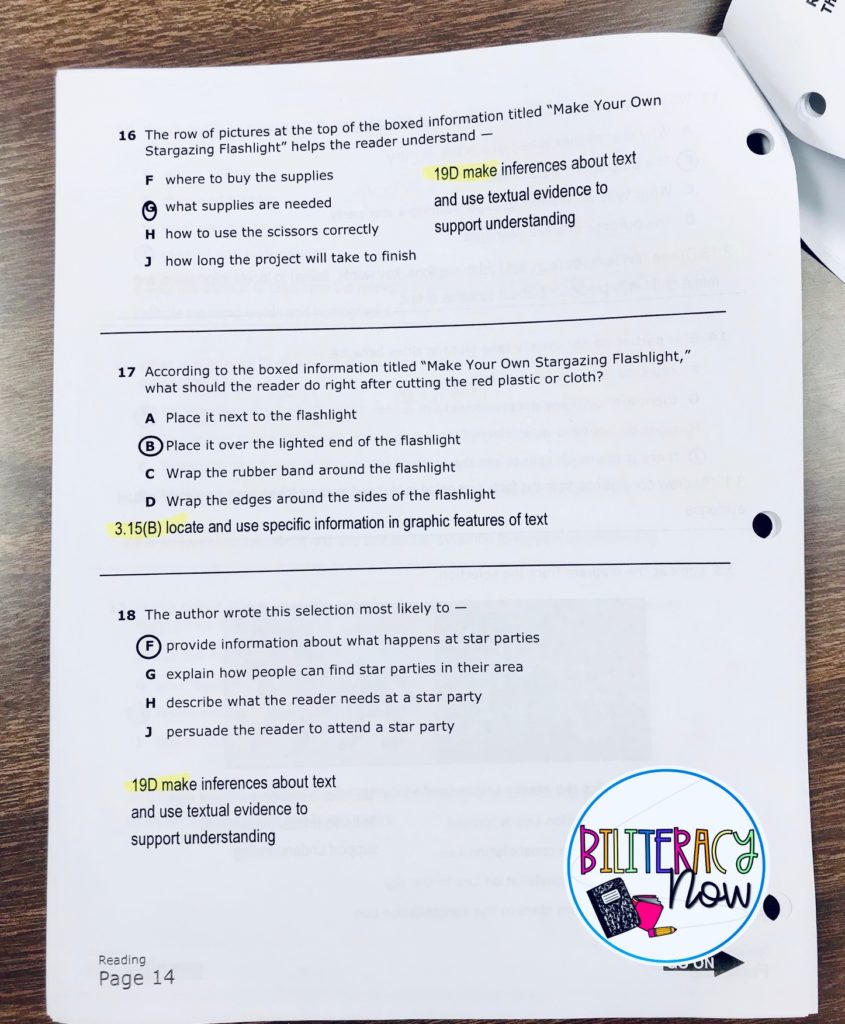
Notice how I circled the answer to each question, and I inserted the TEK/standard.
The next thing I would do is take a closer look at your actual TEKS/standards. In fact, I encourage you to memorize them! For example, I know off the top of my head that 3.4B is context clues in third grade. I promise I didn’t look before posting!
Here’s a tiny screenshot of what a few of our Texas standards (TEKS) look like:


Third, look at your district’s curriculum plans/calendar to orient yourself on what you’re teaching week by week or day by day. You’re going to look for a day where you can incorporate a question stem (directly from your state test) into your lesson.
Let’s pretend today’s lesson is context clues. Therefore, I’d start this lesson by telling my students the various ways to find the meaning of unfamiliar words by using an anchor chart similar to this one:
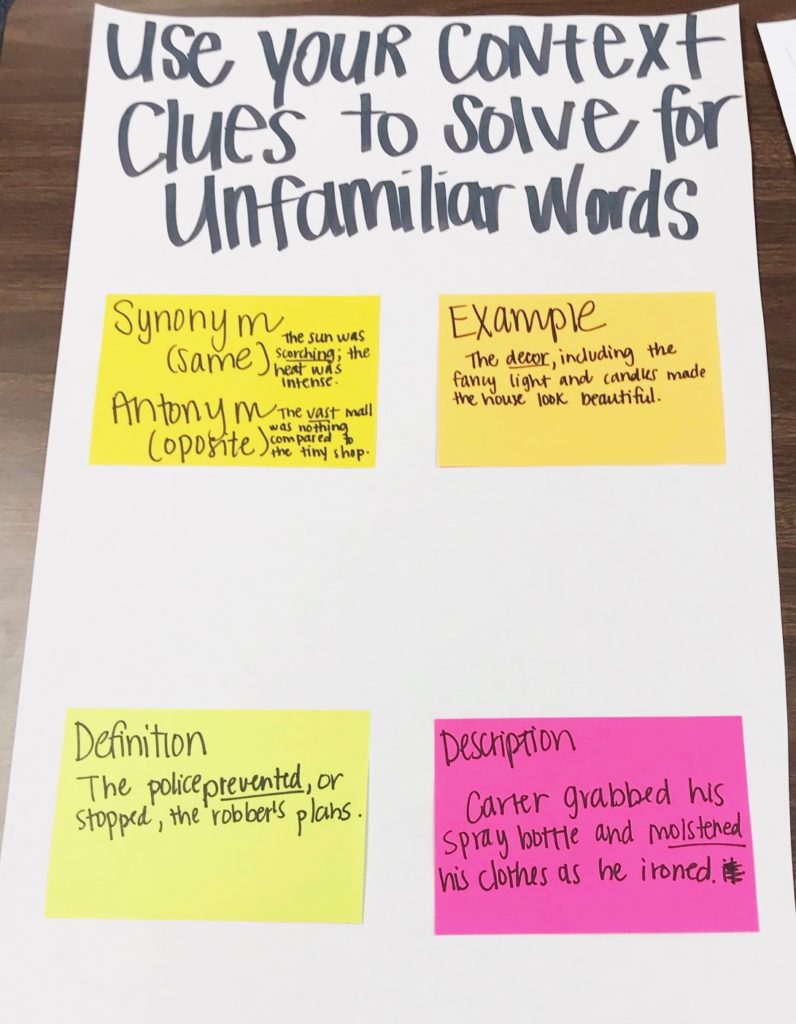
Then I’d MODEL what that looks like, and that’s when the teaching for testing comes into play. For this lesson I gathered a poem from an old state test and wrote out a question stem on a giant sticky note ahead of time because the goal is to expose them to parts of the state test without “drilling and killing.”
This is what a poem and a question stem could look like:
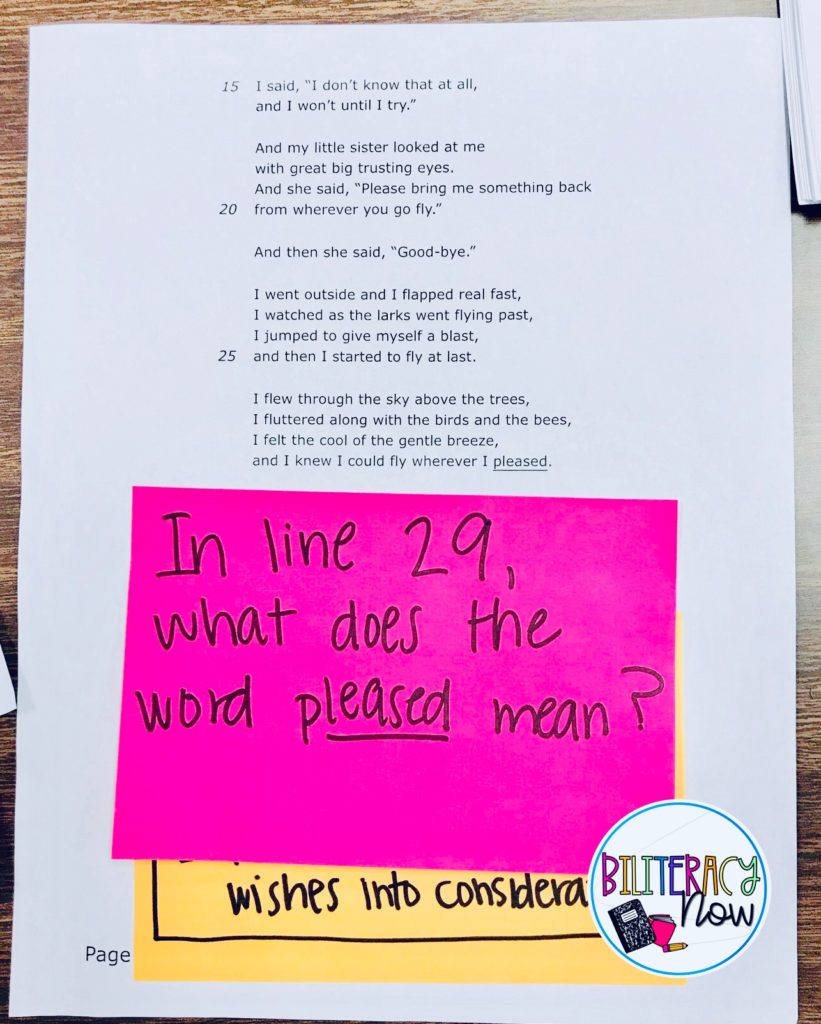
In line ___, what does the word ___ mean? – is a very common context clues question stem in our state tests. So, remember earlier when I told you to label each question with the standard? This is why! I basically looked over the copy of that test to help me locate the context clues question(s), and I plugged in that stem to this poem above. Easy, right?
Tip: I’d recommend projecting the poem and revealing the question at the end. Don’t forget to give them the correct answer when you’re modeling. For additional practice, you could also have them work with a partner to solve for an unfamiliar word by using a different poem. Remember to listen in on those conversations to make sure they’re understanding, and take notes on the students that continue to struggle. You can go deeper with the lesson or simply scratch the surface. It’s totally up to you.
Finally, if you want to be REALLY extra, you could turn this into an anchor chart and hang it up somewhere in your classroom for future reference. Several teachers at my school have an entire wall dedicated to our state test!
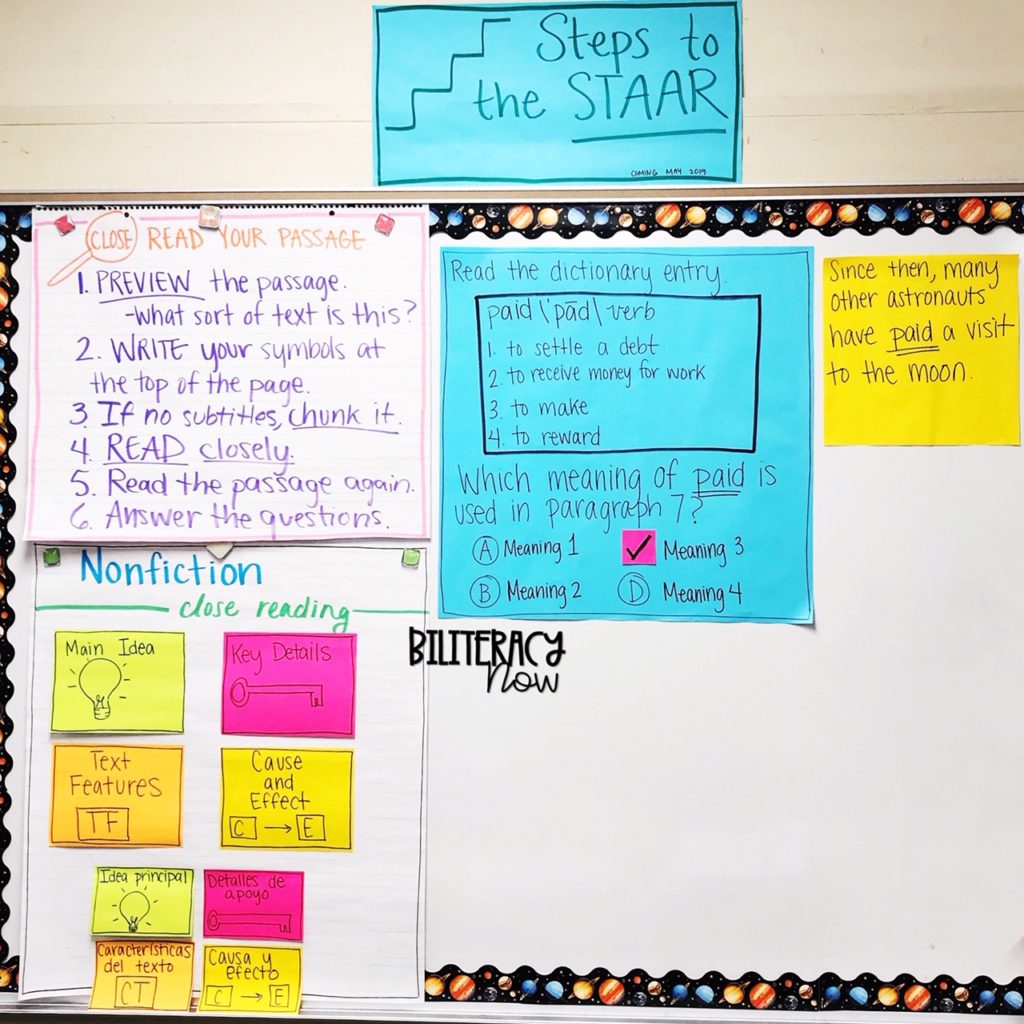
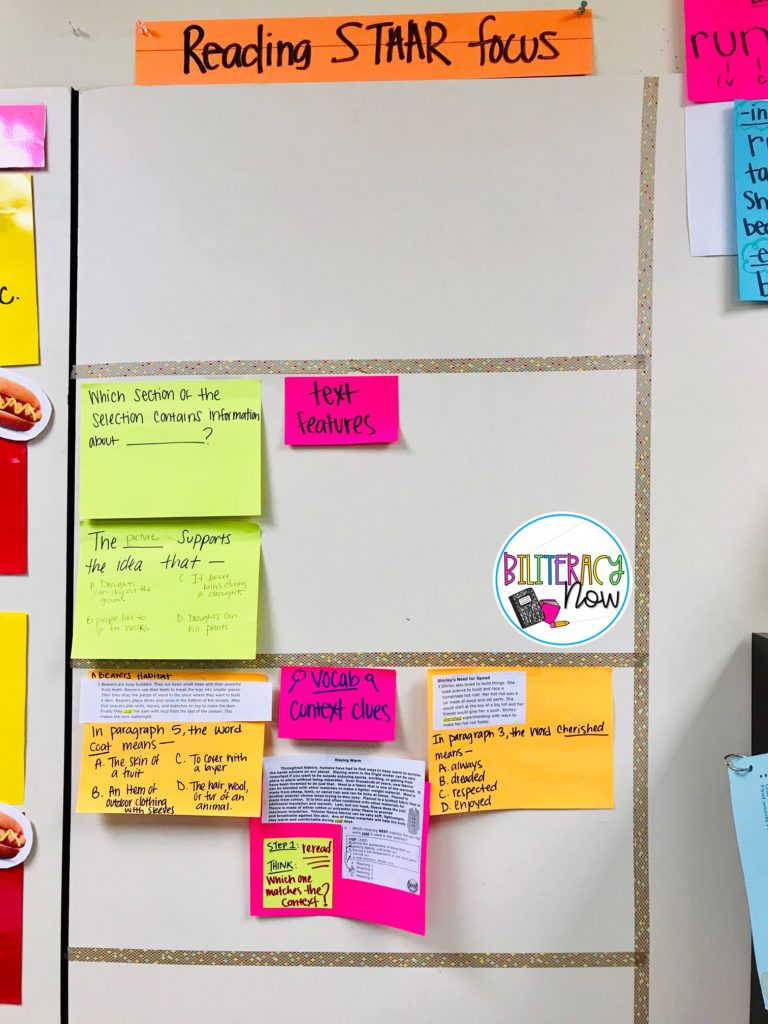
Remember, in order for teaching for testing to be successful, you must:
- Get to KNOW the test
- Get to KNOW your TEKS/standards
- Get to KNOW the relationship between your TEKS/standards and the test
- Get to KNOW your lessons
- Always PLAN ahead and gather your materials
- Always MODEL for your students
- Create a VISUAL when you feel it’s necessary
- NEVER “drill and kill”
Please don’t walk away feeling like teaching for testing is something you must do everyday because it’s not. I’d say once or twice a week is a good balance. As always, it must feel organic, and it’s something you can start doing at the beginning of the school year.
NOTE: You might want to increase the rigor of the questions and frequency once you’re closer to testing.
Questions? Comment below or follow me on IG @biliteracynow.
Happy teaching!